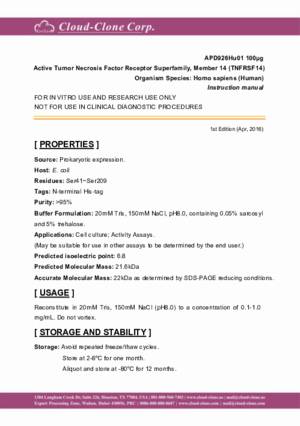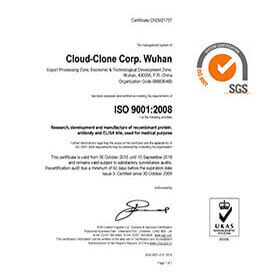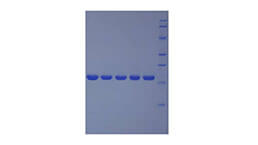Active Tumor Necrosis Factor Receptor Superfamily, Member 14 (TNFRSF14)
CD270; TR2; ATAR; HVEA; HVEM; LIGHTR; Herpesvirus Entry Mediator; Herpes virus entry mediator A; Tumor necrosis factor receptor-like 2
- Product No.APD926Hu01
- Organism SpeciesHomo sapiens (Human) Same name, Different species.
- Buffer Formulation20mM Tris, 150mM NaCl, pH8.0, containing 1mM EDTA, 1mM DTT, 0.01% SKL, 5% Trehalose and Proclin300.
- Traits Freeze-dried powder
- Purity> 95%
- Isoelectric Point6.8
- ApplicationsCell culture; Activity Assays.
- DownloadInstruction Manual
- UOM 10µg50µg 200µg 1mg 5mg
- FOB
US$ 360
US$ 900
US$ 1800
US$ 5400
US$ 13500
For more details, please contact local distributors!
ACTIVITY TEST
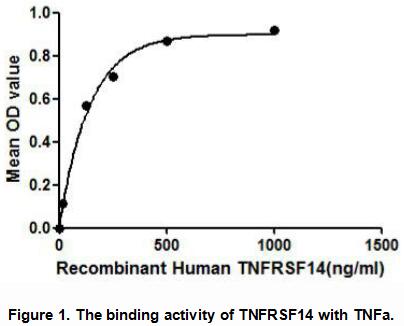
TNFRSF14 (Tumor necrosis factor receptor superfamily member 14) belongs to the tumor necrosis factor receptor superfamily. TNFRSF14 functions in signal transduction pathways that activate inflammatory and inhibitory T-cell immune response. It binds herpes simplex virus (HSV) viral envelope glycoprotein D (gD), mediating its entry into cells. A binding ELISA assay was conducted to detect the association of TNFRSF14 with TNFa. Briefly, TNFRSF14 were diluted serially in PBS, with 0.01%BSA (pH 7.4). Duplicate samples of 100uL TNFRSF14 were then transferred to TNFa-coated microtiter wells and incubated for 2h at 37℃. Wells were washed with PBST and incubated for 1h with anti-TNFRSF14 pAb, then aspirated and washed 3 times. After incubation with HRP labelled secondary antibody, wells were aspirated and washed 3 times. With the addition of substrate solution, wells were incubated 15-25 minutes at 37℃. Finally, add 50µL stop solution to the wells and read at 450nm immediately. The binding activity of TNFRSF14 and TNFa was shown in Figure 1, and this effect was in a dose dependent manner.
USAGE
Reconstitute in 20mM Tris, 150mM NaCl (pH8.0) to a concentration of 0.1-1.0 mg/mL. Do not vortex.
STORAGE
Avoid repeated freeze/thaw cycles. Store at 2-8°C for one month. Aliquot and store at -80°C for 12 months.
STABILITY
The thermal stability is described by the loss rate. The loss rate was determined by accelerated thermal degradation test, that is, incubate the protein at 37°C for 48h, and no obvious degradation and precipitation were observed. The loss rate is less than 5% within the expiration date under appropriate storage condition.
GIVEAWAYS
INCREMENT SERVICES
-
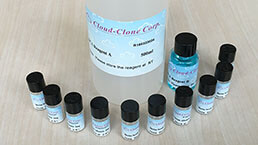 BCA Protein Quantification Kit
BCA Protein Quantification Kit
-
 Molecular Mass Marker for Protein
Molecular Mass Marker for Protein
-
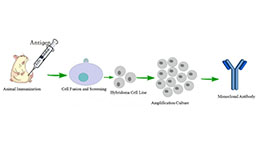 Monoclonal Antibody Customized Service
Monoclonal Antibody Customized Service
-
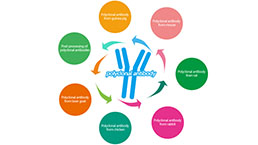 Polyclonal Antibody Customized Service
Polyclonal Antibody Customized Service
-
 Protein Activity Test Experiment Service
Protein Activity Test Experiment Service
-
 Electrophoretic Mobility Shift Assay (EMSA) Experiment Service
Electrophoretic Mobility Shift Assay (EMSA) Experiment Service
-
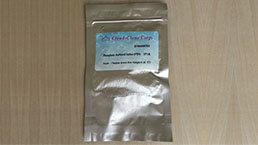 Buffer
Buffer
-
 Lentivirus Packaging Experiment Service
Lentivirus Packaging Experiment Service
-
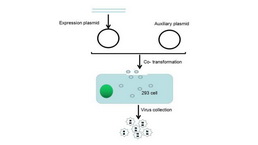 Adenovirus Packaging Experiment Service
Adenovirus Packaging Experiment Service
-
 Real Time PCR Experimental Service
Real Time PCR Experimental Service
-
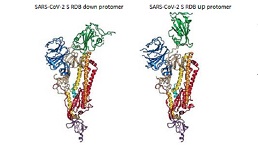 Spike RBD Protein (S-RBD)
Spike RBD Protein (S-RBD)
-
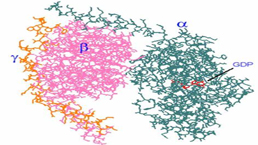 Protein G
Protein G
-
 Protein A
Protein A
| Catalog No. | Related products for research use of Homo sapiens (Human) Organism species | Applications (RESEARCH USE ONLY!) |
| RPD926Hu01 | Recombinant Tumor Necrosis Factor Receptor Superfamily, Member 14 (TNFRSF14) | Positive Control; Immunogen; SDS-PAGE; WB. |
| APD926Hu01 | Active Tumor Necrosis Factor Receptor Superfamily, Member 14 (TNFRSF14) | Cell culture; Activity Assays. |
| PAD926Hu01 | Polyclonal Antibody to Tumor Necrosis Factor Receptor Superfamily, Member 14 (TNFRSF14) | IHC |
| FAD926Hu01 | Anti-Tumor Necrosis Factor Receptor Superfamily, Member 14 (TNFRSF14) Polyclonal Antibody | Flow cytometry. |





